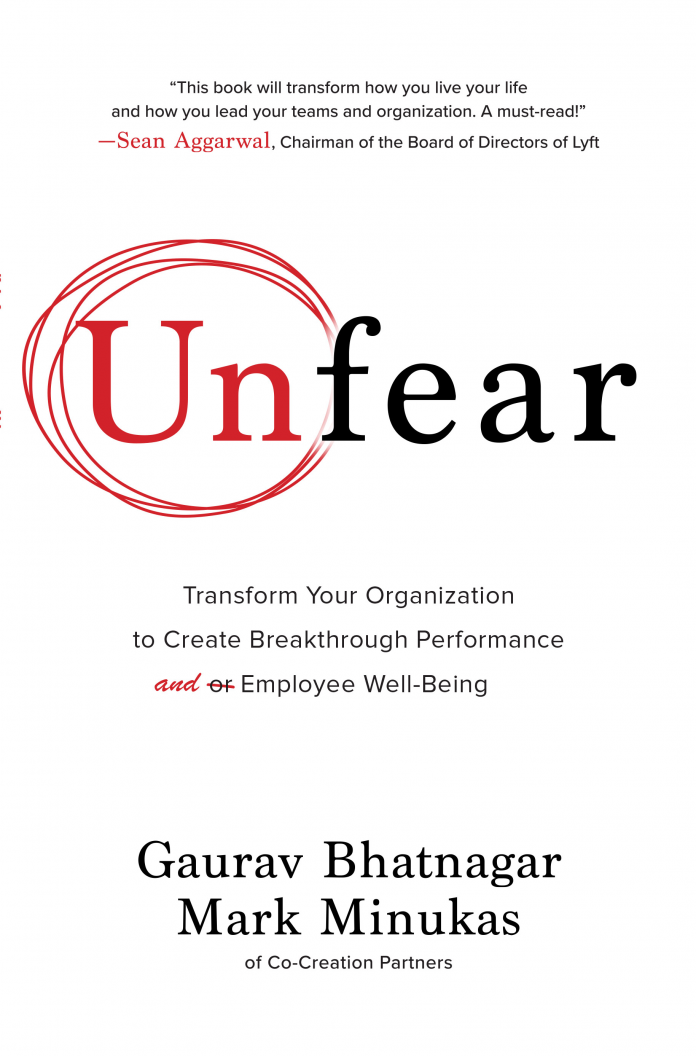
Actions speak louder than words. This is just common sense. Yet, this common sense is hardly ordinary in so many fear-based organizations. In those organizations, leaders say one thing and then behave entirely differently. This lack of alignment increases fear and resentment in an organization because employees begin to doubt the honesty of their leaders and feel that specific rules only apply to them. All leaders need to use two major nonverbal avenues to create an unfear context: role modeling and symbolic actions.
Role Modeling
Role modeling unfear behavior is a vital part of any unfear transformation. When leaders decide to implement the practice and mindsets discussed herein, they must first begin with themselves. If they don’t, it will only inspire suspicion and skepticism. Employees find it unfair to be asked to do something that leaders aren’t doing. In contrast, effective role modeling boosts employees’ courage as they stumble and make mistakes while attempting new ways. However, it’s essential to remember that some actions speak louder than others in all of this. Effective role modeling doesn’t just occur when everything is going well. It is vital to role model positive, unfear behavior during challenging times. Because of negativity bias, people are more likely to remember what happens during a crisis than during normal operations.
For example, one of our clients, a startup, called us in because the new CEO, who had replaced a well-loved predecessor, was having a lot of trouble connecting with the team. The employees were practically in a full-blown revolt, and the company was struggling to get off the ground and launch a significant product. Fear ran rampant throughout the organization. One of the first things that we invited the CEO to do was call a meeting. Then we had him role model openness and vulnerability and shared his life story, including the challenging events that had shaped him and led him to his current role. This proved to be a watershed moment for him and the team. It humanized him, but it also created safety for everyone to tell their own stories. Rather than powering through the revolt, the CEO slowed down and role-modeled a willingness to invest in relationships. This was far from the only thing we did with that company, but it helped lay the essential groundwork to build more trust in the organization.
Symbolic Actions
Symbolic actions are actions that leaders take, small or large, that promote the narrative they want to advance. These actions can be used to tell just about any story. For example, Ray Krock, the former CEO of McDonald’s, used a symbolic action to communicate the importance of cleanliness at McDonald’s franchises. According to the story, he just showed up at a random McDonald’s and started cleaning the place himself with no fuss or warning. According to employees, this one act did more to enhance cleanliness at McDonald’s than any other formal process could because it showed the extent to which the CEO himself was committed to that goal.
Symbolic actions can emphasize any of the mindsets mentioned in the transformation learning section. For example, these actions also can demonstrate a commitment to living a company’s purpose. This is precisely what the CEO of a large Australian bank did back in the 1990s. This CEO had decided to run the company in a sincere, consumer-friendly way. One quarter, the credit-card department suddenly started reporting much higher revenue levels than it had before. The CEO called the head of the department in and asked how he had increased revenue so much. The head of credit cards didn’t want to share this initially, arguing that it didn’t matter and that all that mattered was the result. Eventually, the CEO got him to talk, and he revealed that he did it by increasing one of the hidden fees related to the card. The CEO instructed him to instantly refund this to all the bank’s customers, write an apology, and send it to the customers. Then the bank sent out a press release about the apology to all the major newspapers.
Then the CEO fired the department head.
Actions such as this prove the depth of a company’s commitment to its purpose. Even though the CEO responded with harsh, forceful punishment, these actions don’t increase fear in the workplace because the sentence is aligned with the organization’s stated values. This shows employees that the company is living its values, and it helps guide their behavior. It connects them to the purpose and creates a consistency that reduces fear because they don’t have to worry that their superiors will act in unpredictable ways. Using this tool wisely can set the context for an unfear organization.




